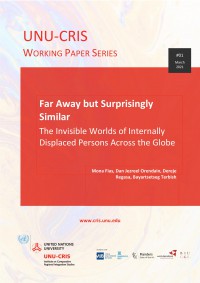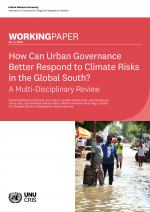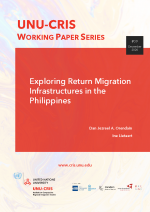Far Away but Surprisingly Similar: The Invisible Worlds of Internally Displaced Persons Across the Globe

Over 50 million people across the globe, or more than 50% of all forced displacements, are internally displaced. These internally displaced persons (IDPs) encounter precarious living conditions but remain largely invisible due to the absence of a coherent international framework. This study compares IDPs’ experiences across three geographical settings (Ethiopia, Mongolia and the Philippines) and thereby seeks to contribute to the international debate on IDPs.
Ongoing and completed work by the researchers is presented and compared to gain insights into causes of displacement, issues at destination and governance of IDPs across these three unique settings. We move beyond the assumption that constricts the concept of IDPS as people who flee conflict. Causes of displacement appear to be context-specific; although, some overarching reasons are observed: (intercommunal) conflicts, human right violations and disasters. Despite peculiar cultural, social and economic backgrounds, risks faced at the destinations are surprisingly similar. They lack access to appropriate housing, jobs, food and common public resources, while also encountering difficulties connecting to local social networks. IDPs generally settle in marginalised areas of big cities where they need to spend more time and money on daily commutes for basic services. Our comparative analysis shows that none of the investigated countries has a holistic approach to IDPs which results in ad hoc governance, characterised by reactive and partial responses focused on assistance rather than protection, empowerment and coping capacities. We conclude that there is an urgent need for an increase in research efforts on IDPs and to create a robust, international framework to enhance the recognition, protection and assistance of IDPs across the globe.


